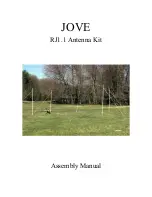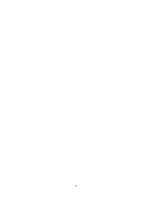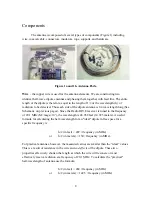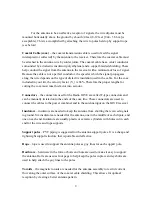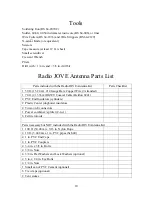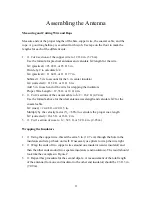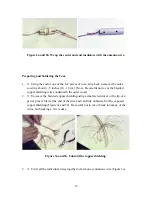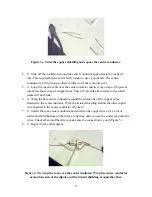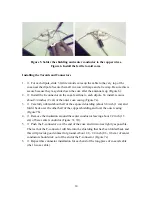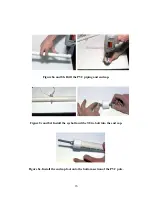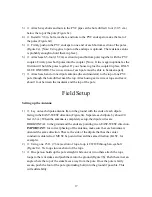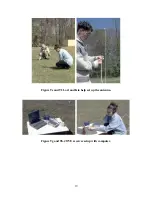
9
For the antenna to be an effective receptor of signals, the wire dipoles must be
mounted horizontally above the ground by about
λ
/4 feet (8-12 feet [2.44 - 3.66 m] is
acceptable). This is accomplished by attaching the wire to poles held up by support rope
(see below).
Coaxial Cable (coax) – the coaxial transmission cable is used to feed the signal
intercepted (or collected) by the antenna to the receiver. Therefore the coaxial cable must
be attached to the antenna wire by solder joints. The coaxial cable has a center conductor
surrounded by a dielectric insulator (polyethylene) and a copper braided shielding. These
help conduct the signal from the antenna to the receiver with a minimum of loss of signal.
Because the cable is not a perfect conductor, the speed at which the signal propagates
along the wire depends on the type of dielectric insulation used in the cable. For the coax
included in your kit, the velocity factor (V
f
) is 66%. Therefore the proper lengths for
cutting the coax must take this factor into account.
Connectors – the connectors used for the Radio JOVE are called F-type connectors and
can be manually twisted onto the ends of the coax line. These connectors are used to
connect the cables to the power combiner and to the antenna input on the JOVE receiver.
Insulators – insulators are needed to keep the antenna from shorting the received signals
to ground. Six insulators are needed for the antenna, one in the middle of each dipole, and
one on each end. Insulators are usually plastic or ceramic cylinders with holes cut in each
end for the wire and rope supports.
Support poles – PVC piping is suggested for the antenna support poles. It is a cheap and
lightweight support structure that is portable and effective.
Rope – rope is used to support the antenna poles as guy lines for each support pole.
Hardware – hardware in the form of bolts and nuts are used to make it easy to support
the antenna. Bolts are used as foot pegs to help keep the poles in place and eyebolts are
used to help attach the guy lines to the poles.
Toroids – the magnetic toroids are needed for the antenna assembly to restrict current
flow along the outer surface of the coaxial cable shielding. This allows for optimal
reception by creating a better antenna pattern.
Summary of Contents for RJ1.1
Page 1: ...JOVE RJ1 1 Antenna Kit Assembly Manual...
Page 3: ...2...
Page 5: ...4...
Page 7: ...6...
Page 8: ...7...

